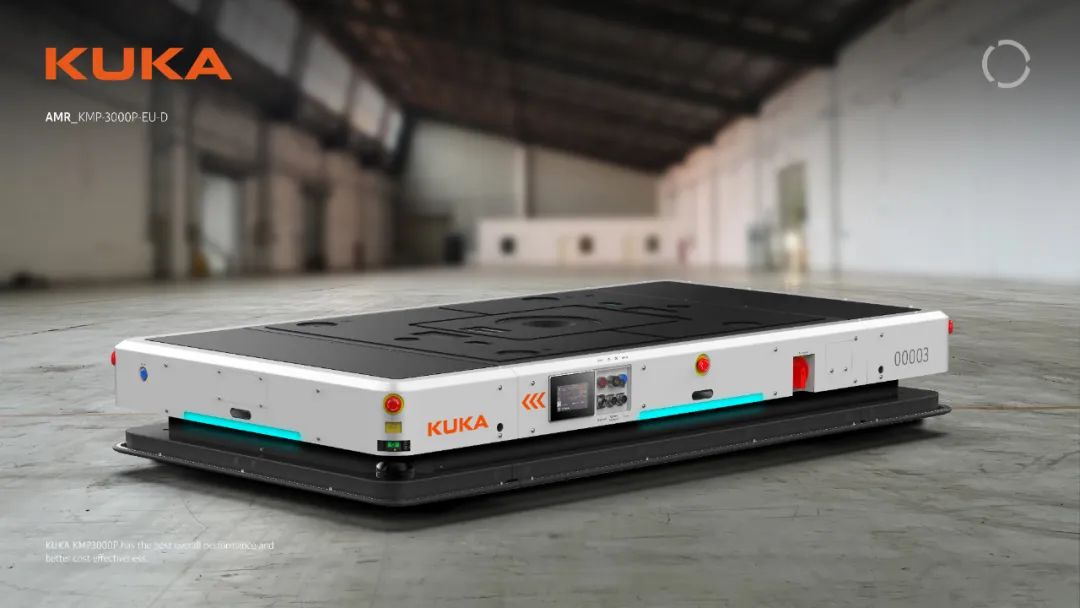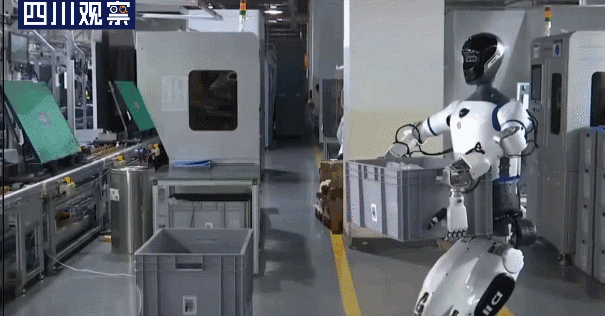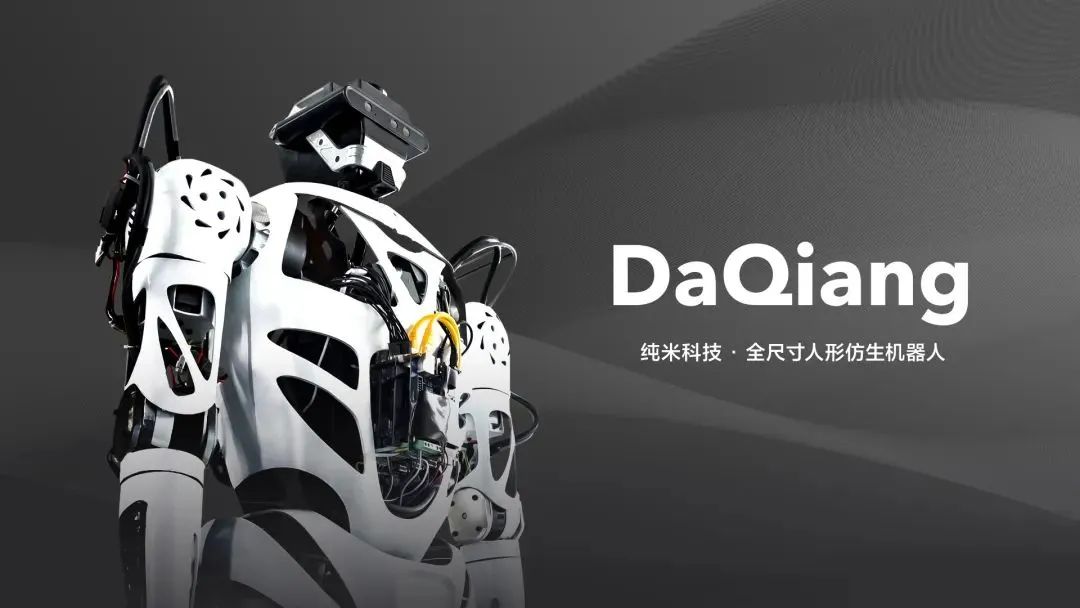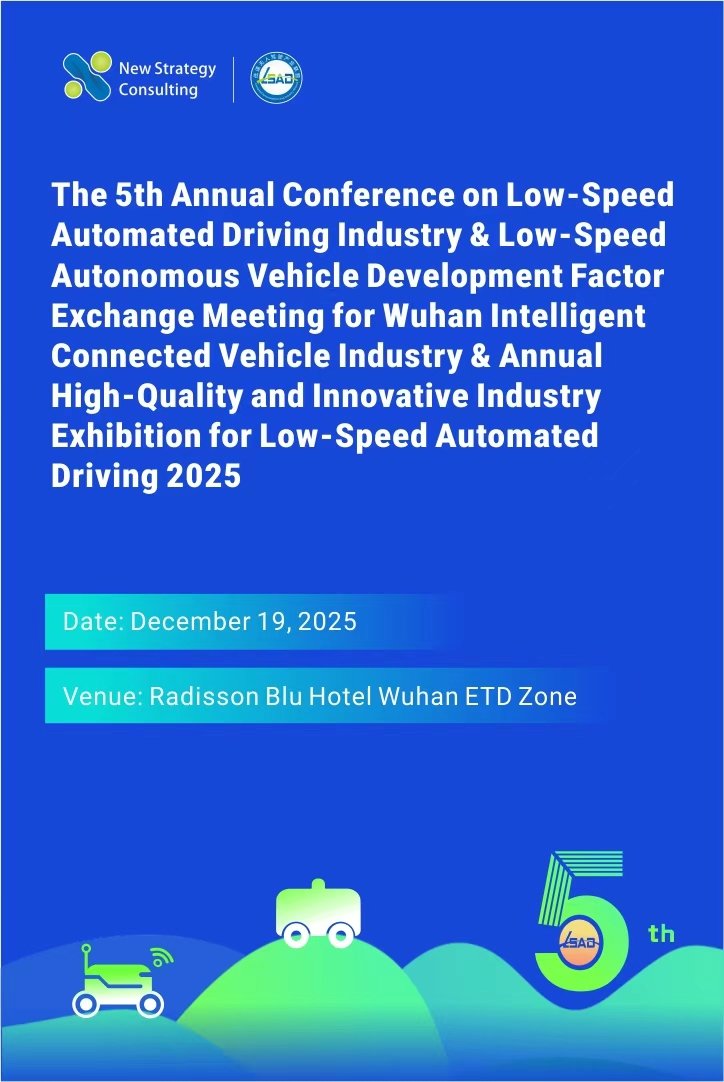At present, with the rapid development of science and technology, the global AI big model technology wave is surging, Industry 4.0 is accelerating, and China’s manufacturing industry is undergoing a profound transformation from “scale expansion” to “quality upgrade”. Against this backdrop, the home appliance industry is also facing new opportunities and challenges. The traditional home appliance market is gradually becoming saturated, and the introduction of “two new” policies has pointed out a new direction for the development of the industry. Home appliance giants such as Haier, Midea, Gree and Changhong have set their sights on the robot race track, opening a new journey in the field of intelligent manufacturing.
Haier: deep integration of industrial internet and robots
On the evening of February 16, 2025, a big piece of news shook the market: Xinshida announced that Qingdao Haier Kaos Industrial Intelligence Co., Ltd., which is 100% owned by Haier Group, will become its controlling shareholder。This transaction is of great significance. It not only stirs up waves in the capital market, but also marks a major breakthrough in Haier’s layout in the robot field.
Despite its poor financial performance and deep losses, New Xstrata has strong technical strength in the field of industrial robots. It has the first batch of robot products CR certification, as early as 2012 launched the first industrial robot, complete master robot controller, servo drive and system software and other key technologies. Haier is interested in Syndication’s technology accumulation in the industrial robot industry chain, especially in control technology and servo drive, which can make up for its own shortcomings. At the same time, Syndication’s market share and customer base in industrial robots also help Haier to expand the market and enhance its influence in the field of industrial automation.
In fact, Haier has been making frequent moves in the robotics field in recent years。In 2018, Haier Zhijia released service robot strategy 1.0, and cooperated with SoftBank Robotics to introduce humanoid robot “Pepper” into China. In 2022, it acquired 100% of Qingdao Tapole Robotics and launched innovative ground cleaning robot products.At the end of December 2023, with Leju robot strategic cooperation;January 3 this year, the establishment of Haier Brothers robot technology (Qingdao) Co., Ltd.After taking control of Xinshida, Haier will integrate the big data and AI big model capabilities of Kaos with Xinshida’s industrial automation technology to provide a full-chain solution for smart manufacturing and build a closed loop of “hardware + software + ecosystem” for smart manufacturing.

Midea: A successful example of technology M & A + Localized Transformation
In 2016, Midea Group started the acquisition journey of KUKA. In the evening of May 18, Midea Group announced that it intends to offer 115 euros per share to acquire German industrial robot company KUKA. It is expected to pay up to 4 billion euros (about 29.2 billion yuan) in cash equivalent, with the aim of increasing its stake in Kuka from 13.5 percent to more than 30 percent. Midea Group ended up with a 94.55% stake in KUKA, as the acquisition program triggered a comprehensive tender offer.
In 2021-2022, Midea Group to further promote the privatization of Kuka. On November 24, 2021, Midea Group announced that it intends to fully acquire the stake of KUKA and privatize it through a wholly-owned subsidiary. On the evening of March 25, 2022, Midea Group announced that its wholly-owned subsidiary will acquire KUKA with 80.77 euros per share, with a total acquisition price of 150 million euros (about 1.05 billion yuan). Upon completion of the acquisition, Kuka became a 100% -controlled foreign subsidiary of Midea Group and delisted from the Frankfurt exchange.
Midea’s acquisition of Kuka, which was seen at the time as a bold cross-border move, has become a classic example of Chinese appliance companies laying out a robotics track.
After many years of development, Midea’s robot and automation business has achieved remarkable results。In 2024, its revenue exceeded 30 billion yuan, and it has several well-known brands, and its products cover core parts to entire machinery, from hardware devices to systems. In the Intelligent Manufacturing Technology Park of Foshan, a “robot production robot” has been realized. The fully automatic production line composed of KUKA robots can work 24 hours a day.An average of 30 minutes can be offline a robot, cumulative production and delivery of industrial robots more than 80,000 units, and the core components of local production of more than 85%.
Through the “technology M & A + localization transformation” model, Midea combines Kuka’s hardware technology such as precision control with its own software R & D capabilities, achieves breakthroughs in the research and development of key components such as servo motors and controllers, and improves domestic production rates and performance. At the same time, actively expand the application scene, from the automotive industry to the new energy resources, 3C electronics extended.
Take the KUKA mobile robot production line as an example, KUKA Autonomous Mobile Robots, KUKA AMR, or KUKA AM R, started with Airbus heavy-duty AMR applications in 2008, and KUKA Germany began AMR business, established KUKA AMr independent business department in early 2021, and AMR global product research and development and production base moved to Kuka China. Kuka Mobile Robots has rolled out hardware and software products for KMPi and P series and KMP + custom AMR and mobile robot software platforms, providing customers with a one-stop smart logistics solution.

Gree: self-research breakthrough, to overcome the core technical problems
Gree chose a path of independent research and development。Because the upstream core equipment had been “choked” by foreign enterprises, in 2013, Gree announced that it would enter the field of high-end equipment and set up the Automation Equipment Manufacturing Department to embark on the journey of self-development of robots. In the same year, the first 6-axis industrial robot, the first AGV, and the first CNC five-axis manipulator were successfully developed, and the first phase of the Jilin University Robot Factory was completed and put into operation。Since then, Gree has continued to promote the development of robot business. In 2015, Gree set up Gree Intelligent Equipment Company. In 2017, Gree set up Zhuhai Gree Robot Co., Ltd. and Gree Robot (Luoyang) Co., Ltd.
After more than 10 years of efforts, Gree has solved two core technical problems in the field of industrial robots, namely, drive and reducer. In the service of motor, servo drive, motion controller and other aspects of in-depth research and development, to achieve a full range of 1kg-600kg load robot product coverage, to meet the needs of different industrial scenarios.
In 2025, Gree Electric Appliances established Shanghai Gree Automotive Technology Co., Ltd., focusing on intelligent robots and auto parts. At the same time, Gree Capital Investment, as an important industrial investment and capital operation platform of Gree Group, has invested in a number of robots and related industrial chain enterprises, covering the fields of humanoid robots and core parts, opening up a new space for “Gree System” in the robot industry.
According to the mid-2024 financial report of Gree Electric Appliance, the revenue of intelligent equipment sector of Gree Electric Appliance, including the businesses of robots and CNC machine tools, is 260 million yuan, which is still small at present.
Changhong and other companies: actively layout to seize new racetracks for humanoid robots
In addition to the above three giants of white goods , Hisense Group , Sichuan Changhong , De Chang shares have also laid out the robot track .
In 2024 , Hisense will lead the creation of the Shandong Province Humanoid Robot Manufacturing Innovation Center , focusing on the ” humanoid robot + ” family service area , and has related robot patents to enhance robot performance and adaptability .
Sichuan Changhong ‘s wholly-owned subsidiary Changhong Energy added the concept of “humanoid robot” in April 2024, indicating its determination to explore the robot field。In July 2024, the first humanoid robot “assembler” jointly developed by China Arms Equipment Group Automation Research Institute Co., Ltd. and Changhong Company was tested in the Mianyang Changhong Intelligent Manufacturing Industrial Park.

Dechang shares also announced in October 2023 that it will cooperate with five industry-related companies to jointly build the Guangdong humanoid robot innovation center .
Xiaomi ‘s ecosystem focused on kitchen appliances pure rice technology has also on January 19 , 2023 , for the first time to show its ” full-size humanoid bionic robot ” video .

Home appliance giants are betting on the robot race for a number of reasons. On the one hand, the traditional home appliance market tends to be saturated and has limited room for growth, while the market potential of the robot industry is huge. According to industry data, the domestic industrial robot market scale in the first half of 2024 increased by 21.3% year-on-year, and the market share has exceeded 50%. On the other hand, household appliance companies have accumulated a wealth of automation and intelligent technologies, such as motor technology and control technology, in the production process over many years, which can be transferred to the development and application of robot technology, providing strong support for the entry into the robot industry. With the development of AI large models and other technologies, the perception, decision-making, and execution capabilities of robots are constantly improving, which also provides new opportunities for enterprise development.
However, there are also certain barriers to entry in the robotics industry, and Chinese companies still face many challenges in the high-end robotics field, with a low rate of self-development of key components, and many high-performance sensors and controllers still rely on imports. At the same time, the shortage of relevant technical talent has also become an important obstacle to the development of the industry.
Although the expansion of new businesses may not be easy, with the continuous layout of the robotics circuit by appliance giant companies, the future of smart manufacturing will usher in more innovation and change. Whether Haier builds intelligent manufacturing closed-loop through integrating resources, Midea improves market share through technology acquisition and localization transformation, or Gree overcomes its core technology through independent research and development, it will promote the wide application of robot technology in the industrial field and daily life.





